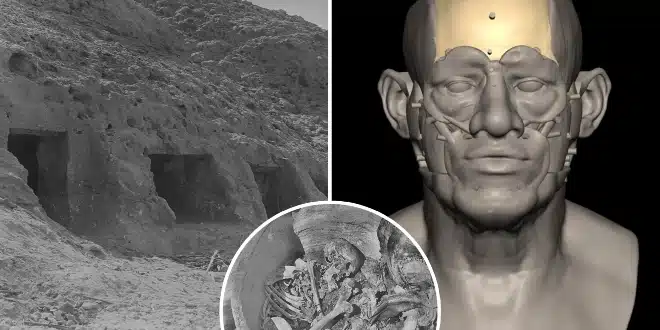For the first time, scientists have successfully sequenced a full human genome from ancient Egypt, offering unprecedented insight into the population structure and ancestry of early Egyptians. The DNA, which dates back approximately 4,500 to 4,800 years, was extracted from a male individual buried near the early period of pyramid construction. The findings were published in the journal Nature by researchers from the Francis Crick Institute and Liverpool John Moores University.
This major milestone comes four decades after initial efforts by Nobel laureate Svante Pääbo to recover ancient Egyptian DNA ended with limited results due to poor preservation. The newly reconstructed genome provides valuable genetic evidence of Egypt’s ancient connections with both North Africa and West Asia, revealing more complex population interactions than previously known. Until now, it was believed that cultural exchanges were primarily visible through artifacts like pottery or scripts, but this genome confirms that genetic links also spanned across regions.
Recovery, Analysis, and Historical Significance
The individual’s remains were uncovered in 1902 from Nuwayrat, a site located around 265 kilometers south of Cairo. The burial, dated between the Early Dynastic and Old Kingdom periods, was in a ceramic vessel positioned within a hillside tomb—an era that predates the practice of mummification in Egypt. The remains had been donated by the Egyptian Antiquities Service to British archaeologist John Garstang’s excavation committee during colonial rule and later stored at the World Museum Liverpool.
Advances in sequencing technology allowed scientists to recover DNA from a tooth, leading to the successful reconstruction of a complete genome. Prior attempts had only yielded partial genetic sequences from three ancient Egyptians, hindered largely by the country’s warm climate, which accelerates DNA degradation. The current study overcame these challenges, enabling detailed analysis of ancestry, physical features, and lifestyle.
Examination of isotopic signals from the teeth suggests the man spent his early life in Egypt. His genetic makeup showed dominant North African ancestry, with approximately 20 percent of his DNA linked to Mesopotamian populations, covering areas of modern-day Iraq. This genetic admixture supports theories of significant cross-regional interaction during this formative period of Egyptian civilization.


